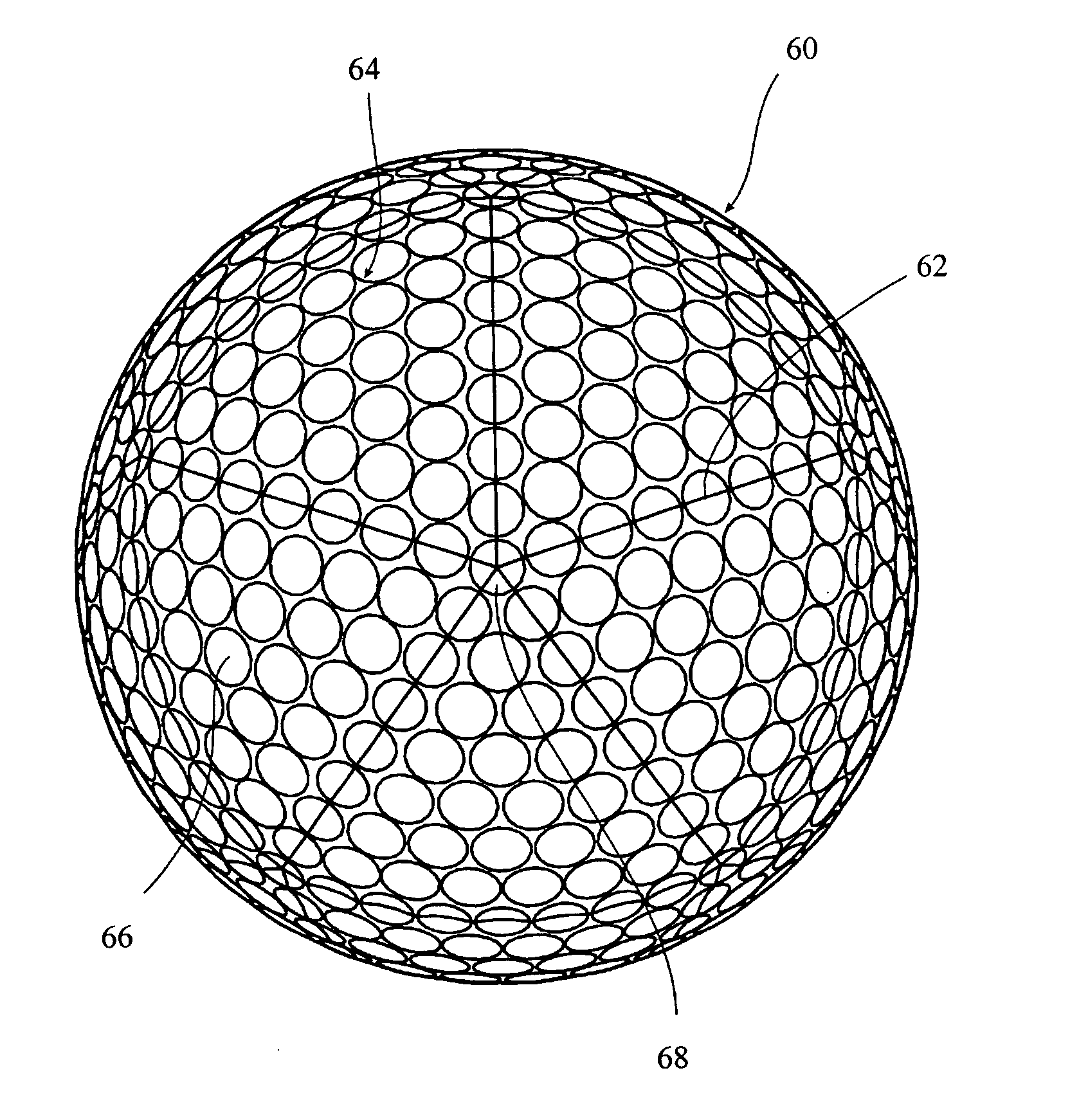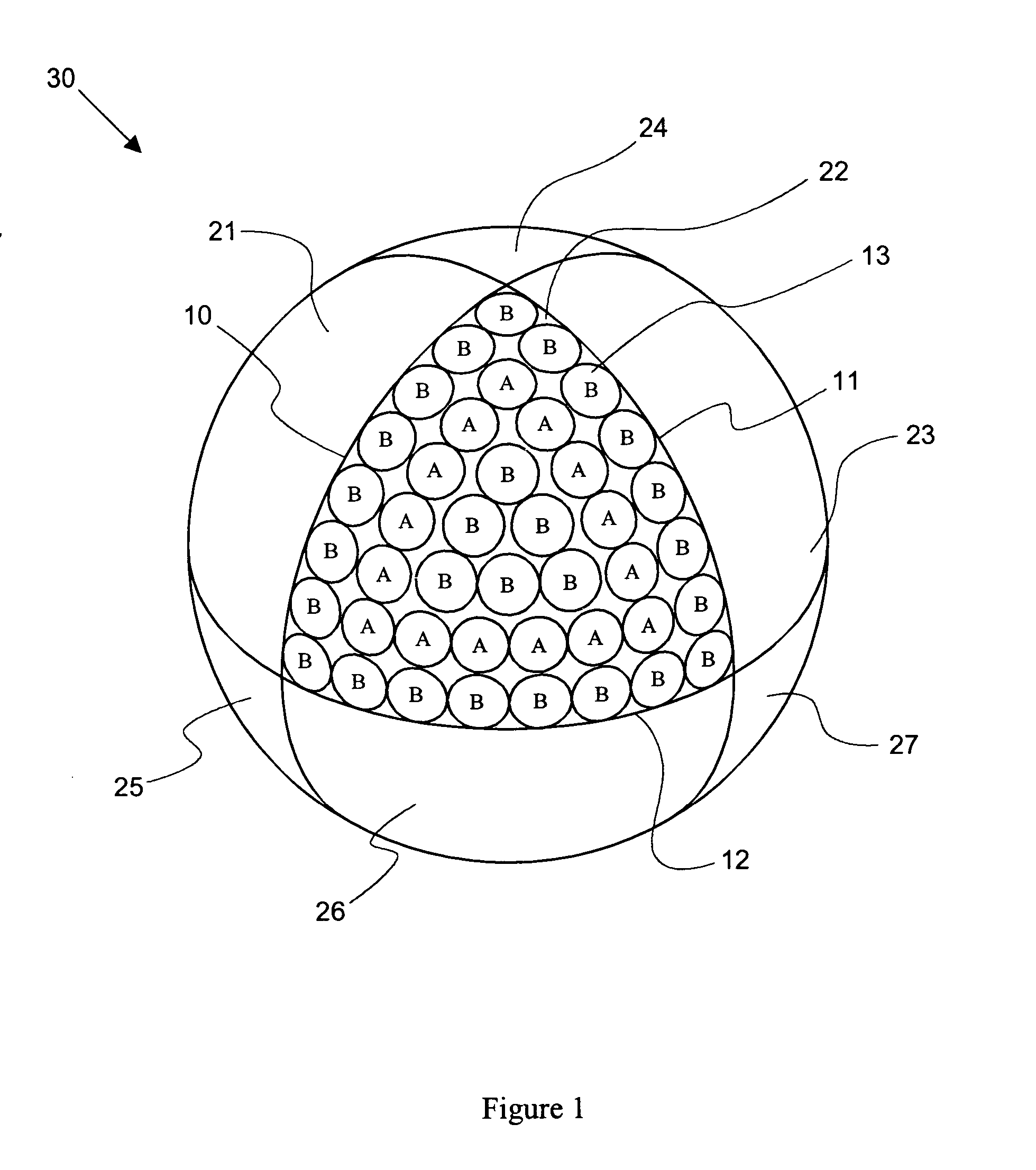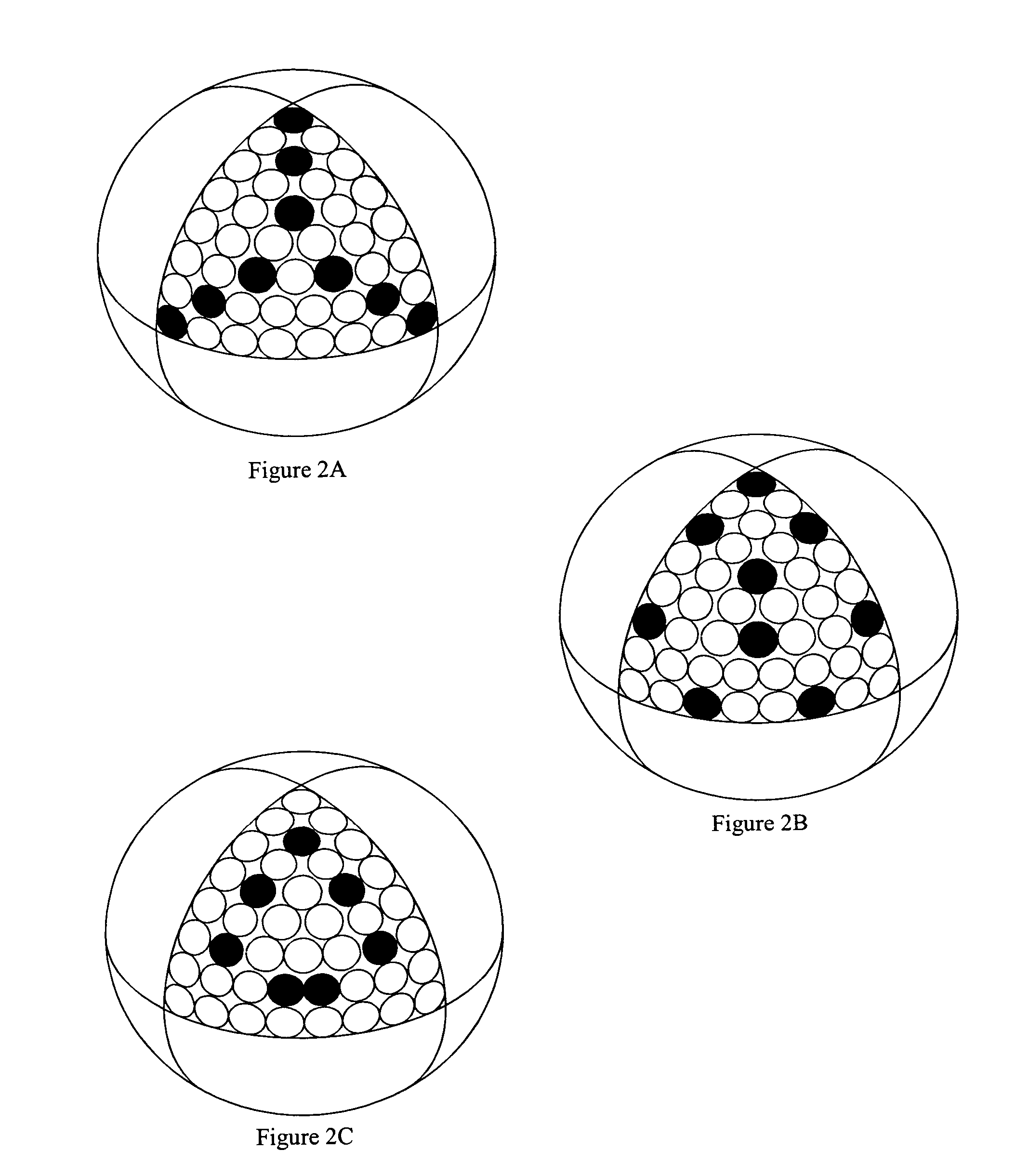Surface pattern for golf balls
a golf ball and surface pattern technology, applied in the field of surface patterns, can solve the problems of a large amount of drag on the ball, a bluff body, and a large amount of pressure drag, and achieve the effect of increasing skin friction, reducing the drag, and improving the friction
- Summary
- Abstract
- Description
- Claims
- Application Information
AI Technical Summary
Benefits of technology
Problems solved by technology
Method used
Image
Examples
example 1
In a first exemplary embodiment, select dimples of a known dimple pattern are replaced with protrusions. One such known method of packing dimples on a golf ball divides the surface of the golf ball into eight spherical triangles corresponding to the faces of an octahedron, which is a solid bounded by eight triangular plane faces. Dimples are then positioned within each of the surface divisions according to a placement scheme. Alternatively, the surface divisions may be further divided and the resulting subdivisions packed with dimples. Octahedron-based dimple patterns generally cover approximately 60-75% of the golf ball surface with dimples. U.S. Pat. Nos. 5,415,410 and 5,957,786 disclose octahedron-based dimple patterns.
FIG. 1 shows the surface of a golf ball 30 divided into eight identical spherical triangular regions 21, 22, 23, 24, 25, 26, 27, and 28 (not visible) that correspond to the faces of a regular octahedron. The boundaries of these regions comprise three mutually ort...
example 2
FIG. 5 illustrates a second embodiment of a golf ball 70 of the present invention. Golf ball 70 has a plurality of dimples 72 arranged thereon according to a known placement scheme. While an octahedron-based dimple pattern is shown as the illustrative embodiment, any dimple pattern may be used.
When dimples are formed in a golf ball cover, there are necessarily areas of the cover that are not covered by a dimple. These areas are called land area or lands. These unaltered or undimpled areas are spread over the surface of the golf ball. The percentage of the ball surface that the lands comprise is dependent upon the ball's dimple pattern. The surface coverage of dimples is preferably greater than approximately 75%, with the remainder of the surface comprising land areas. The surface coverage is more preferably greater than approximately 80%, and most preferably greater than approximately 85%. The land area works with the turbulence generators to create a turbulent flow of air behind ...
example 3
In a third exemplary embodiment of the present invention, a protrusion pattern is selected and dimples are positioned around the protrusions. The dimples are preferably positioned on unaltered land areas among and between the protrusions. This embodiment is also illustrated in FIG. 5, but with reference 72 identifying protrusions and reference 76 identifying dimples.
In this embodiment, protrusions are arranged on the surface of a golf ball according to a known pattern. Patterns traditionally used to place dimples on a golf ball, such as the octahedron and icosahedron patterns discussed above, may be used. The dimple locations can be selected by manual placement or with a distribution method. The protrusions and the dimples are distributed about the surface of the golf ball such that the golf ball will exhibit substantially symmetric flight characteristics regardless of where the golf club (or other device) strikes the ball. Like the embodiment of example 2, placement of turbulenc...
PUM
 Login to View More
Login to View More Abstract
Description
Claims
Application Information
 Login to View More
Login to View More - R&D
- Intellectual Property
- Life Sciences
- Materials
- Tech Scout
- Unparalleled Data Quality
- Higher Quality Content
- 60% Fewer Hallucinations
Browse by: Latest US Patents, China's latest patents, Technical Efficacy Thesaurus, Application Domain, Technology Topic, Popular Technical Reports.
© 2025 PatSnap. All rights reserved.Legal|Privacy policy|Modern Slavery Act Transparency Statement|Sitemap|About US| Contact US: help@patsnap.com



